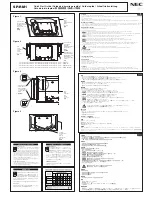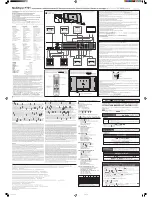
42
43
Volume is the amount of training completed; intensity is the effort or energy
required for a particular form of training. Volume increases and decreases
during the training year depending on where you are in your build-up.
Intensity, on the other hand, increases right throughout your build-up
phase, gradually in the base but more rapidly during the speedwork
phase. Volumes of intensity increase and decrease.
Your performance parallels your intensity but remains low for a longer period
of time and has a more gradual increase. During speedwork performance
begins to improve more rapidly and is at its peak rate of increase during the
taper period. This means that despite all your hard training in the base, you
will not see the real benefits until very late in the build-up.
CALCULATING TARGET HEART RATES
Correct interval intensity is determined by laboratory testing because both
resting and maximum heart rates vary from individual to individual. The
most reliable way to determine your maximum heart rate (HR
max
) is by an
exercise stress test. This can also be determined, although less accurately,
by indirect calculations. According to the American College of Sports
Medicine (ACSM) most people can estimate their maximum heart rate by
the formula:
220 - Age = Maximum Heart Rate (HR
max
)
To find a true resting heart rate (HR
rest
), lie in bed for 2 to 3 relaxing minutes
in the morning after waking up, then use the Polar Heart Rate Monitor to
measure your resting heart rate.
The Karvonen formula, which is based on a heart rate reserve taking into
account the resting heart rate as well as the maximum heart rate, is an
accurate method for calculating the target heart rate.
By subtracting your resting heart rate from your maximum heart rate you
can use the Karvonen formula to calculate your target heart rates for
various training intensities. Both the HR
rest
and HR
max
should be measured
values - not predicted - for the Karvonen formula:
Target HR = [(HR
max
- HR
rest
) x % training intensity] + HR
rest
Minimun
Heart Rate Reserve
0
50
200
Resting Heart Rate
Maximun Heart Rate
Example:
HR
max
:
200 beats per minute
HR
rest
:
50 beats per minute
Reference: Precision Multisport
50% training intensity:
Target Heart Rate
= (HR
max
- HR
rest
) x 50% + HR
rest
= (200 - 50) x 50% + 50
= 150 x 50% + 50
= 75 + 50
= 125 beats per minute
EXAMPLES OF INTERVAL TRAINING SESSIONS
Training intensity in the following example exercise sessions refers to
the Karvonen formula calculation. If the target heart rate is calculated
as a percentage based on HR
max
the corresponding training intensity is
higher. E.g. 50% of Karvonen formula corresponds to the 60% of HR
max
(see the table).
Target heart rate
Classification
based on
of intensity
HR
max
the Karvonen formula
<35%
<30%
Very light
35-59%
30-49%
Light
60-79%
50-74%
Moderate
80-89%
75-84%
Heavy
≥
90%
≥
85%
Very heavy
Adapted from Pollock and Wilmore (1990). Reference: Physiology of
sport and exercise, p.524.
Coach man.USA
22.1.1999, 08:41
42-43










































